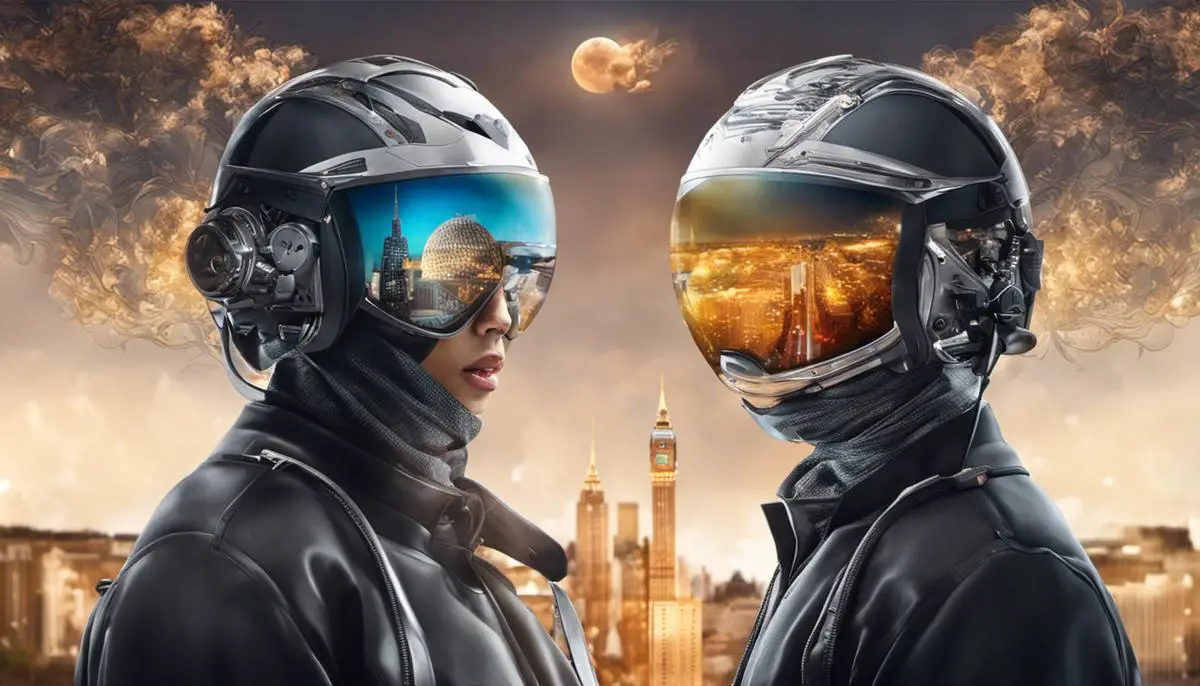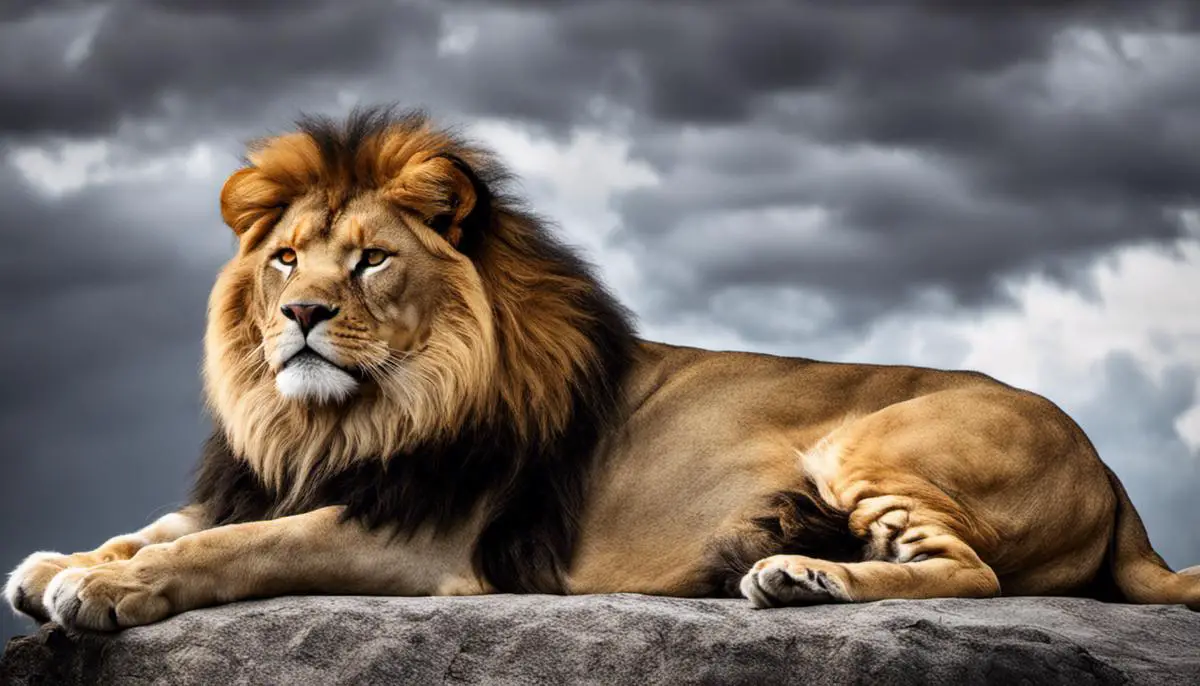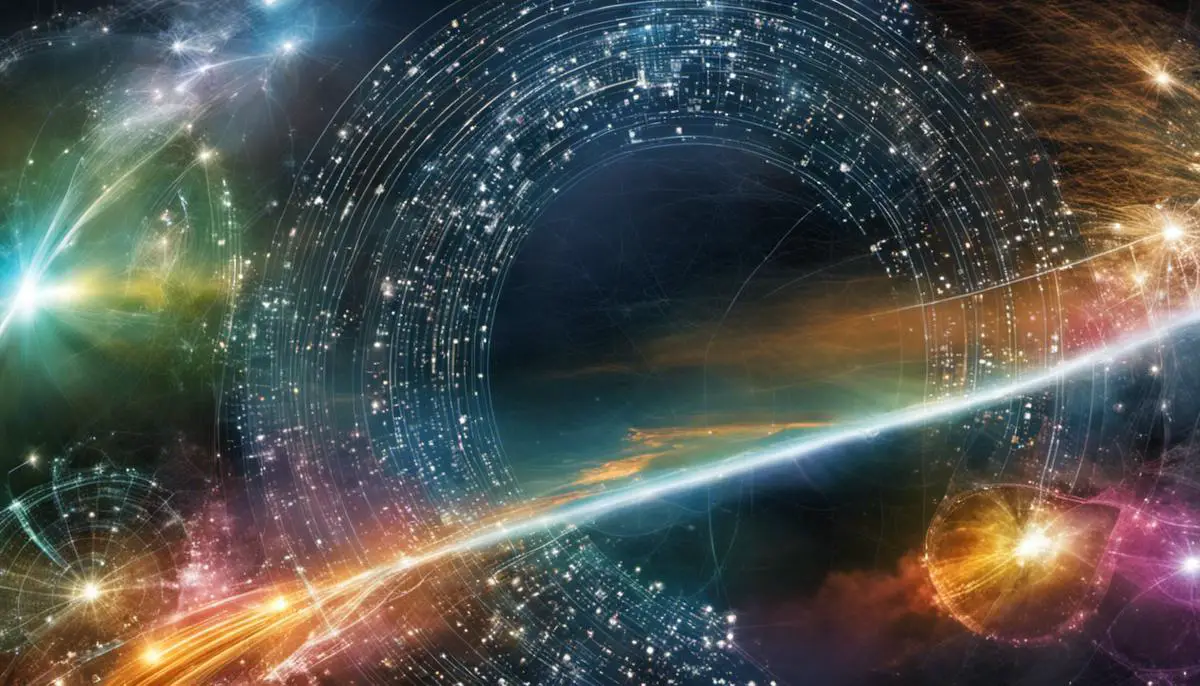In an era where dynamic advancements in artificial intelligence (AI) continuously redefine the possible, certain subsets of machine learning have taken center stage in pushing technological boundaries. Among these is the fascinating domain of image-to-image translation, which empowers machines to understand and replicate visual content in a transformative manner.
Uniting this remarkable technology with the realm of zero-shot learning – a learning paradigm where systems accurately classify unseen objects – births a novel concept of zero-shot image-to-image translation. This unique intersection paves the way for unprecedented potential in redefining how machines interpret and recreate visual elements.
Contents
An Overview of Image-to-Image Translation
Decoding the Significance of Image-to-Image Translation in Contemporary Science
In the realm of computer vision and artificial intelligence, one area of interest and intense focus is the intriguing concept of image-to-image translation. Image-to-image translation boasts the potential to revolutionize a myriad of sectors, from automated driving to medical diagnostics, thus underscoring its significance.
At its core, image-to-image translation sounds quite self-explanatory — it pertains to the conversion of an image from one state (input) into another state (output). Crudely put, if artificial intelligence is the realm’s scholar, image-to-image translation is its adept linguist, translating between different visual languages.
However, delve deeper, and one would realize that the term is an umbrella, encompassing a wide array of tasks; each with nuances and challenges uniquely their own. These tasks include colorization, i.e., converting a black and white image into color; or transforming a day’s image into night; or mapping a Google maps-style image to a geographic survey-style image.
In recent years, pixel-level transformations, or transforming every pixel of an image to yield the translated image have grown more sophisticated, largely because of a phenomenal development called Generative Adversarial Networks (GANs).
GANs represent a radical departure from traditional models for image-to-image translation and embody an elegant solution to address a complex challenge. Without delving into the technical nuances of how they function, GANs essentially consist of two neural networks – a Generator and a Discriminator – that work in tandem to learn the underlying patterns and produce superior results. This potent combination has realized unprecedented and strikingly accurate image transformations.
The significance of image-to-image translation is multifaceted. For one, the potential applications for this technology are vast and could touch upon virtually every sector of modern life. For instance, in the automotive industry, translation models could train autonomous vehicles to navigate varied lighting and weather conditions by transforming daytime images into night-time or foggy equivalents.
In the medical field, this technology could help identify and diagnose diseases by translating medical scans into more precise or easier-to-understand visual representations. The technology could also aid agriculture by translating satellite images into detailed ecological maps to guide farming and conservation efforts.
In the realm of arts and entertainment, image-to-image translation could execute tasks such as transforming sketches into photorealistic images, thereby streamlining animation production or enhancing special effects.
Lastly, at a fundamental level, progress in image-to-image translation helps reveal nuanced understanding of information contained within images. It deepens the comprehensive understanding of how visual information can be manipulated, interpreted, and represented, thereby contributing to overarching knowledge in the field of computer vision and artificial intelligence.
The illustration above only scratches the surface of the promise that image-to-image translation holds. As the field continues to evolve, so too will the range of its potential applications. In essence, image-to-image translation is not simply an intriguing concept within computer vision and artificial intelligence. Instead, it stands as an emblem of the transformative power that these disciplines can engender, shaping our understanding of the world’s visual language.

Introduction to Zero-Shot Learning
In the quest to improve image-to-image translation capabilities, zero-shot learning presents an intriguing approach. Tracing its origins to the domain of Natural Language Processing (NLP), zero-shot learning has garnered much attention for its ability to generalize to never-before-seen classes, thereby potentially providing a solution to the persistent challenge of data scarcity.
Zero-shot learning leverages semantic associations to comprehend unobserved classes, with inter-class relationships playing a key role. The framework functions via mapping both observed and unobserved classes into a semantic space, such as a vector of attributes describing specific characteristics or a word vector space. Training occurs only on observed classes, with the central goal to create a model that predicts class labels accurately in the semantic space.
Crucial to the success of zero-shot learning are the adopted semantic representations, which heavily influence model performance. This necessitates a careful selection of attribute descriptions or embeddings that effectively capture the essence and characteristics of the classes involved.
Turning to computer vision, the relevance of zero-shot learning is immense, forming the foundation for image-to-image translation tasks such as cross-modal translation (image and text) and cross-domain translation (sketches and photographs). The ability of zero-shot learning models to generate property-rich outputs despite having never seen examples during training holds significant potential, particularly within the context of Generative Adversarial Networks (GANs).
GANs deploy zero-shot learning within image-to-image translation tasks with promising results, including the realistic rendering of multi-modal translations, such as textual descriptions into visually appealing images. Paralleling the natural development of languages, this technology endeavors to develop a comprehensible visual language without the need for copious amounts of labeled data, thereby democratizing AI capabilities across various sectors.
One cannot fully comprehend the future of image-to-image translation without discussing the potential of zero-shot learning within this scenario. As sectors like healthcare, automotive, and agriculture further adopt AI technologies, the ability to generalize to unseen classes will become not just beneficial but essential.
In the grand scheme, however, zero-shot learning’s true potential lies in its capacity to not only reduce the extensive data requirements prevalent in deep learning models but also to foster an improved comprehension of the cognitive processes involved in visual perception and object recognition, paralleling the goal of artificial general intelligence. As the understanding of this advanced learning paradigm grows, new horizons within the computer vision and artificial intelligence fields will potentially rise, making way for future innovation and development.

Zero-Shot Image-to-Image Translation: A Deeper Examination
Zero-shot image-to-image translation represents a convergence of the realms of image-to-image translation and zero-shot learning. This fusion creates a novel, influential framework that has significant potential across various tasks, from artistic applications to crucial functionalities in sectors such as medicine and agriculture. This article delves into the synergistic potential that the synthesis of these two fields discloses.
Zero-shot image-to-image translation exploits the concept of zero-shot learning – the ability to predict classes unseen during training using semantic associations. In the context of image-to-image translation, it uses these associations to produce translations of images that haven’t been encountered during the training phase.
This approach is often facilitated by using a mapping function that projects input images into a semantic space, often represented by semantic attributes or class labels. During the training phase, a mapping function is learned that can align images in this semantic space. Once this function has been adequately trained, it can then be used to translate new images – ones not seen during training – based upon their semantic proximity to images seen during training.
One desirable characteristic of zero-shot image-to-image translation is that it bypasses the necessity for paired data during the training process. Instead, it takes a single input image and a set of target class attributes, and generates a visually plausible image that aligns with the target attributes. This drastically broadens translation possibilities and makes the method far more versatile than other approaches.
Generative Adversarial Networks (GANs) play a seminal role in this technique as they serve as a powerful engine for this synthesis. They facilitate the translation process by generating synthetic images that resemble the target images as closely as possible. The development and implementation of GAN architectures specifically optimized for zero-shot learning has opened up new avenues in image-to-image translation.
The benefits reaped from the amalgamation of zero-shot learning with image-to-image translation are vast. This union enables systems to comprehend and translate images of unseen categories, providing immense value to domains such as autonomous driving where it’s crucial to recognize and respond to a wide variety of never-before-seen visual data.
In the medical field, it could support the diagnosis of rare diseases by facilitating translation of unseen medical images. In the arts and entertainment sector, it renders potential for creating novel, artistic representations.
Looking into the future, this integration is bound to push the boundaries of what we envision as achievable in the field of artificial intelligence and computer vision. It beckons the pursuit of more comprehensive models that can not only interpret the world through the visual spectrum but can accurately represent and translate this understanding across varied semantic spaces.
Further research and advancements in zero-shot image-to-image translations indeed represents an exciting avenue for expanding the overall knowledge in the field of artificial intelligence and computer vision.

Applications and Case Studies of Zero-Shot Image-to-Image Translation
Departing from the fundamentals of image-to-image translation and zero-shot learning, one may delve into the practical utilities and real-world illustrations of zero-shot image-to-image translation. This innovative technology not only holds promise in bridging the gap between the world of computer vision and practical use-cases but also poses an exciting radar in terms of its dynamic potentials.
Zero-shot image-to-image translation enables unseen category translation, meaning that models can comprehend and interpret image categories they have not been trained on. This is of immense utilization in settings where obtaining paired data is troublesome or impossible. Weather prediction serves as an outstanding real-world example. Meteorologists can use these models to predict future weather changes from current imagery data, even if no previous equivalent exist.
Apart from meteorology, the field of geoinformatics furnishes pragmatic deployment of zero-shot image-to-image translation. Geospatial analysts use this technology to convert satellite images into maps or decipher information from unseen geographical areas. These maps then assist in urban planning, environmental conservation, disaster management, and more, hinting at the profound implications of this technology.
In the realm of autonomous driving – an industry brimming with innovation – zero-shot image-to-image translation proves vital. Self-driving vehicles utilize the technology to interpret and adapt to unseen road signs or unusual driving conditions. This helps improve the accuracy of autonomous systems while promising passenger safety.
Moreover, zero-shot image-to-image translation finds substantial application in the domain of healthcare, particularly in medical imaging. Radiologists can use models trained on common modalities to interpret rare modalities, enhancing medical diagnosis and treatment plans. For instance, translating MRI scans into CT scans or recognizing pathological conditions that the system was not explicitly trained for, increases the efficiency and broadens the scope of predictive healthcare.
In the retail industry, virtual try-on systems benefit from zero-shot image-to-image translation. Customers can virtually try on outfits in different colors or styles, even when photos of those specific products don’t exist. This enhances the overall customer experience and is especially useful for online retail platforms.
To map the future trajectory of zero-shot image-to-image translation, attention should be given to improving the model’s ability to understand complex semantic associations. This would enable the translation of not only individual objects but entire scenes with previously unseen object interactions. Furthermore, advancements in the architecture of Generative Adversarial Networks (GANs), particularly improving the robustness, can contribute to enhanced performance in zero-shot image translation.
Thus, zero-shot image-to-image translation poses as an exciting vanguard in the realm of AI and computer vision. Its versatile applications add value across myriad sectors, driving a deeper understanding and fostering transformations in the way these sectors operate.

Challenges and Future Prospects of Zero-Shot Image-to-Image Translation
Having established the landscape of the zero-shot image-to-image translation field, it is salient to delve deep into the current challenges it faces.
One of the primary obstacles relates to the inherent limitations of existing state-of-the-art models. Take, for instance, the Generative Adversarial Networks (GANs); while they have greatly propelled image-to-image translation tasks, their performance noticeably degrades when applied to zero-shot settings.
Common manifestations include artifacts in the generated images and a lack of coherent structure. With zero-shot learning relying on unseen or novel classes, GANs often struggle to generate high-quality and holistic images due to this information gap.
Secondly, dimensional discrepancy poses a significant challenge to the current framework of zero-shot image-to-image translation. The semantic space, often in high-dimensional setting, diverges from that of the image space. Mapping a high-dimensional semantic space encompassing diverse visual attributes onto an image space while ensuring complete preservation of structure, texture, and details entails highly complex computational operations.
Furthermore, the training data scarcity in this area exacerbates the image-to-image translation hurdles. Zero-shot learning implies that there is a minimal amount of annotated data corresponding to target classes, making it a tough research problem. Existing models predominantly rely on large-scale paired or unpaired data, but when it comes to zero-shot scenarios, the dataset exhibits a unique structure where only source domain comes with abundant labeled data whereas target domain lacks such data.
Simultaneously, the uncertainty in semantic representations necessitates more rigorous attention. The zero-shot setting necessitates leveraging an external semantic source, such as attributes or word embeddings, to bridge the information gap between seen and unseen classes. However, these semantic sources typically contain noise and biases, thus influencing the effectiveness of zero-shot image-to-image translation.
Veering to future developments, it’s prudent to zoom into three broad areas of exploration. Firstly, integrating advanced generative models could potentiate zero-shot image-to-image translation. Incorporating variational autoencoders or flow-based models, for instance, might mitigate some of the complications currently faced by GANs, while maintaining or enhancing the image generation quality.
Secondly, robust training strategies can be developed to handle the unique data structure inherent in zero-shot learning. For example, self-supervised learning or transfer learning techniques, which are typically used for overcoming data scarcity, could prove valuable.
Finally, to address the dimensional discrepancy and preserve detailed attributes of the source image, advanced mapping functions and sophisticated techniques can be devised to facilitate accurate translations from the high-dimensional semantic space to the image space.
In contemplation of the challenges and prospective advancements in zero-shot image-to-image translation, it becomes palpable that this field, though nascent, holds tremendous potential. With steadfast commitment for investigating the underlying research questions and driving continuous innovation, we set sail into uncharted territories for pushing the boundaries of knowledge in computer vision and AI.

Despite its compelling advancements and profound potential, the sphere of zero-shot image-to-image translation is not without its challenges. As researchers seek to navigate limitations while looking to push the boundaries, the focus is on fostering better comprehension and translation efficacy in diverse visual scopes.
Looking ahead, the promise of more advanced machine learning models that can accurately translate previously unseen images suggests exciting prospects for technological enhancement and applications. As such, the future of zero-shot image-to-image translation appears to hold paramount significance in the evolution of AI, poised to revolutionize research and industries in unimaginable ways.

Emad Morpheus is a tech enthusiast with a unique flair for AI and art. Backed by a Computer Science background, he dove into the captivating world of AI-driven image generation five years ago. Since then, he has been honing his skills and sharing his insights on AI art creation through his blog posts. Outside his tech-art sphere, Emad enjoys photography, hiking, and piano.

